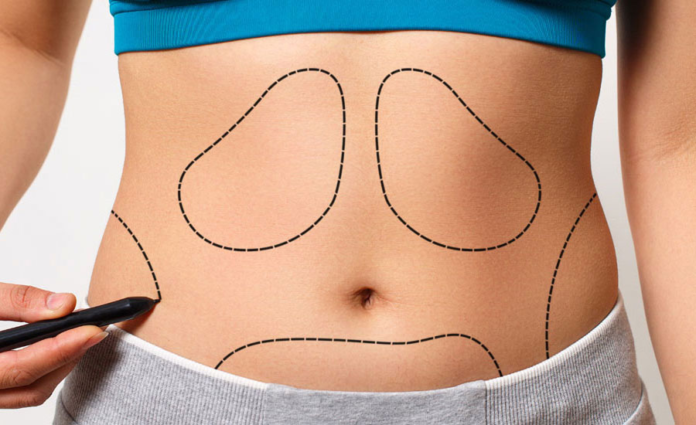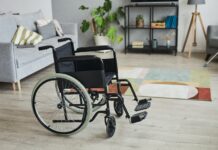Are you considering going for stomach liposuction? This type of procedure can work wonders on your shape and figure by improving the appearance of your abdomen. Liposuction reduces the fat around your belly region and slims down your stomach and if you incorporate the correct diet and exercise into your lifestyle you can enjoy great results. So, if you are thinking about having treatment here are some important things to remember.
- Don’t expect to get a six-pack:
You might have enviously looked at photos of people with six-pack abdomens and be considering stomach liposuction to get the same results yourself. However, liposuction alone is not going to work miracles regarding the six-pack.
The six-pack stomach is down to muscle definition. If you want to create this look you are going to have to put some work into it through exercise and possibly weight training. You can have liposuction to reduce your stomach and when you have healed you can then devise a plan to build up strong abdominal muscles to obtain a six-pack.
So, in short, don’t expect miracles and think you can get that six-pack through stomach liposuction alone.
- There are different types of fat:
When thinking about having stomach liposuction to gain a better figure it is important to remember that there are two different types of fat. These are visceral and subcutaneous fat.
The fat that jiggles around and which you can pinch is the subcutaneous fat. This type of fat might not look good but it is harmless and lies just underneath the skin.
The visceral type of fat is generally harder and firmer and is generally termed a “beer belly”. This is unsightly and is bad for your health.
Hormones are released from both types of fat, however, visceral fat is close to your organs and as such, there is more chance of it interfering with the functions of your organs. This can bring about conditions such as type-2 diabetes, high blood pressure, higher levels of cholesterol and an increase in stroke and heart disease.
Liposuction only removes subcutaneous fat, if you want to get rid of the visceral fat it must be done through exercise and diet.
If you have both visceral and subcutaneous fat, a diet and exercise plan and liposuction combined can help.
- You don’t need general anaesthesia for stomach liposuction:
You might be considering going for stomach liposuction but worry about having to have general anaesthesia. The good news is that the procedure will be undertaken in a minor surgical theatre without the need for general anaesthesia.
When having your treatment the doctor will fill the area of your stomach with saline and anaesthetic solution to numb the site. This also helps to shrink the blood vessels, which helps to reduce bruising. The solution will also help to break up the fat.
The other good news is that the procedure doesn’t require a stay in hospital either. Generally, you will be able to leave the clinic after 30 minutes of having the procedure.
- Liposuction doesn’t mean you can’t gain the weight back:
One important thing to remember if you have stomach liposuction to gain a flatter stomach, this doesn’t mean you can’t gain the weight back.
Therefore, liposuction should not be considered as being a weight loss solution. With this in mind after having the procedure it is important to stick to a healthier lifestyle to maintain your flatter stomach and slimmer figure.
What stomach liposuction does is remove fat cells from within the abdomen permanently. This means they will not come back. Following the procedure, your abdomen will have around 70% fewer fat cells. Should you gain weight other regions of your body might look bigger compared to your stomach as your stomach is always going to be smaller than it would if you had not had the liposuction.
Essentially, stomach liposuction isn’t a quick fix and you may gain the weight back without adopting a healthier lifestyle.
- Loose skin may be a possibility:
Your age will factor into the results you can expect from stomach liposuction. As we get older the collagen production in the body decreases and the skin losses its elasticity. What this means is that the skin doesn’t bounce back like it used to do.
This doesn’t mean that you cannot have liposuction as you get older. However, what it does mean is that the older you are when having the treatment the bigger the risk you might have of having loose or baggy skin following the procedure.
Liposuction treatment does help to boost the production of collagen, which is needed for elasticity, but loose skin after extreme weight loss or liposuction on the stomach may still occur.
In some cases, where the size of the abdomen is very large and the skin lacks elasticity a tummy tuck may be considered.
- Compression garments following treatment:
Following your stomach liposuction, you will be required to wear a compression garment for a specific length of time. Your doctor will advise you on this.
Generally, when having liposuction treatment on your stomach you will be asked to wear a tight Velcro binder. As a general rule, the doctor will ask you to wear this garment for around 2 to 3 weeks following your treatment. The type of garment you will be asked to wear will depend on factors such as the consistency of your skin, how much fat was removed from the area and the swelling.
- Resuming an exercise regime:
If you are used to following an exercise regime you will be wondering how long following stomach liposuction it will take before you can get back into it.
Exercise will enhance your body shape and help in delivering you the best results from liposuction. However, it is important not to strain yourself too early following your procedure.
You can get up and about moving around as soon as you feel able and generally gentle exercise can be started after around two weeks. You should take it easy getting back into any strenuous routines and around the four-week mark; you should be able to undertake moderate exercise. Intense sessions can usually begin around six to eight weeks but do take advice from the doctor before doing so.























